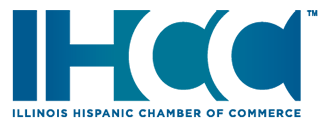In April, when the federal government offered $349 billion in loans to small businesses reeling from government shutdown orders in the pandemic, the funding ran out in just 13 days, prompting Congress to swiftly approve a second round of $310 billion.
Small businesses have since grown more wary of taking the money, the New York Times reported today.
As of Wednesday, more than $130 billion was left in the fund, known as the Paycheck Protection Program.
Even more striking was the fact that on many days last month, more money was being returned than borrowed, according to data from the Small Business Administration, which is overseeing the program — highlighting its messy execution and confusing rules that deterred some small businesses from using the money.
Thousands of companies that got loans have sent the money back, according to lenders.
For some owners, the program’s terms were too restrictive; for others, the criteria for loan forgiveness was too murky.

Some public companies that received these loans returned them after a public outcry, and in the initial rush, some borrowers accidentally got duplicate loans that they, too, returned.
A total of around $12 billion was returned, Treasury Secretary Steven Mnuchin said at a Senate hearing on Wednesday.
The amount of loans outstanding under the program dropped to $510.2 billion at the end of May, from $513.3 billion in the middle of the month, according to data from the Small Business Administration.
By Wednesday, the amount of approved loans had inched back up to $511.4 billion — indicating that changes Congress made to the program last week to make it less restrictive could be pushing more money out the door.
But obstacles remain.
The program’s chaotic execution has “chilled the willingness of many small businesses to even apply for loans during the second round of P.P.P. funding, and has caused many businesses to return disbursed loans out of fear of doing something wrong,” Tony Wilkinson, the chief executive of the National Association of Government Guaranteed Lenders, a trade group, said last week at a hearing of the Pandemic Response Accountability Committee, an oversight group.
The turn of events is notable for a signature program of Congress’s $2.2 trillion coronavirus relief package, which only a couple of months ago was caught in an intense borrowing frenzy by desperate business owners.
After all, small businesses are still in distress. Even as states begin to reopen, millions of stores around the country remain shuttered and could go out of business.
Last week, Congress moved to loosen the program’s rules and give businesses more flexibility in spending their aid, and President Trump signed the bill on Friday.
The change was widely praised by small‐businesses advocacy groups and will help many borrowers.
The amended rules could help the remaining $130 billion move faster.
My expectation is that we will definitely see businesses that were on the sidelines now take it,” Mr. Mnuchin said.
But having the terms of their loans revised on the fly yet again — which has happened repeatedly since the program began in April — is a nightmare for borrowers as they struggle to salvage their companies.
For many small businesses that depend on foot traffic, like restaurants and nail salons, even the more relaxed relief terms might not be enough.
To have their loans fully forgiven, companies must keep the same number of employees on the payroll as before the pandemic, at the same wages. That’s a hard bar to clear for business owners whose ventures remain shut.
The paycheck program was largely meant to keep workers off unemployment rolls by funneling money to their employers, and it made progress toward that goal.
Job numbers released on Friday showed gains in industries that received small‐business loans and suggested that the program had helped offset at least some of the economic damage caused by the shutdown.
More than 4.5 million companies, from solo gig workers and small restaurateurs to retailers and professional services firms with fewer than 500 employees, got help. For most, it was a lifeline.
The paperwork for proving that a loan complied with the terms is extensive and complicated; the Small Business Administration’s 11‐page application for loan forgiveness is much more intricate than the loan application itself. Any portion that is not forgiven becomes a debt that must be repaid within five years. (The initial term was two years.)
Many trade groups for lenders and small businesses, such as the Consumer Bankers Association and the Small Business Majority, have asked for blanket forgiveness for loans of less than $150,000.
So far, the Small Business Administration and the Treasury Department — which is calling the shots on most of the paycheck program’s terms — have not indicated any willingness to grant that.


